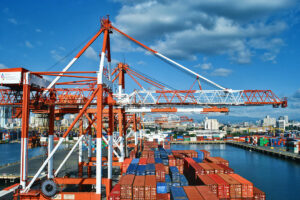PHILIPPINE economic growth is expected to slow further in the coming quarters as consumer spending eases.
Nomura Global Markets Research lowered its Philippine gross domestic product (GDP) growth forecast for the second quarter to 5.6% from the 6.4% it gave a month ago, its monthly economic report showed.
It also trimmed its third-quarter projection to 4.8% from 4.9% previously.
“We believe consumer spending growth will continue to moderate, given falling household purchasing power,” Nomura research analysts Euben Paracuelles and Rangga Cipta said.
The Philippine economy grew by 6.4% in the first quarter, the slowest in two years. This was also below the 8% posted in the same quarter a year prior but was within the government’s 6-7% GDP growth target for 2023.
Household final consumption expenditure, which contributes around three-fourths to GDP, grew by 6.3% in the first quarter. However, this was slower than the 7% growth in the previous quarter and the 10% a year earlier amid elevated inflation.
“Public infrastructure spending is likely to improve, given the government’s strong prioritization, but private investment still faces headwinds from sharply higher interest rates,” Nomura Global Markets Research added.
This year, the Philippine government is planning to spend 5.3% of GDP on infrastructure, equivalent to around P1.29 trillion. The government is looking to spend 5-6% of GDP on infrastructure until 2028.
Gross capital formation, the investment component of the economy, grew by 12.2% in the first quarter, slower than 17.7% last year.
Nomura said export growth will also continue to weaken as the US economy may begin to slow down in the third quarter.
“We expect the current account deficit to stay large at 4.1% of GDP in 2023 reflecting the combination of weakening export growth, the boost to capital goods imports from infrastructure projects and higher food imports to address domestic supply shortages,” it said.
This forecast is higher than the Bangko Sentral ng Pilipinas’ (BSP) projection of a $17.1-billion deficit for 2023, which is equivalent to 4% of GDP.
The country posted a current account deficit of $17.8 billion in 2022, higher than the $5.9-billion gap a year earlier, as the trade in goods deficit widened.
Meanwhile, Nomura raised its growth forecast for the fourth quarter to 5.1% from the 4.3% it gave in May.
As a result, it kept its full-year GDP growth forecast at 5.5%, below the government’s goal.
On the other hand, Pantheon Macroeconomics also kept its 5.5% GDP growth forecast for the Philippines this year, it said in a separate note on Monday.
“Support is waning on two fronts: debt growth has hit a ceiling and remittances growth is evaporating,” Pantheon Macroeconomics economists Miguel Chanco and Moorthy Krshnan said.
Outstanding loans by big banks grew by 9.7% to P10.86 trillion in April, BSP data showed.
“Credit card debt growth year over year is now plateauing around the 30% mark — about double the rate of the historical average — with trends at the margin no longer strengthening,” the think tank said.
“The rise and fall have been the most evident, so far, in salary-based general consumption — or “payday” — loans, which accounted for 22% of the acceleration in household debt growth last year, despite making up just 11% of total borrowing historically,” it said.
Remittance growth may also slow this year, it added.
Cash remittances sent through banks jumped by 3% to $2.67 billion in March from $2.59 billion in the same month in 2022. This is the biggest monthly inflow recorded since the $2.76-billion cash remittances seen in January.
SLOWER INFLATIONMeanwhile, Nomura Global Markets Research trimmed its full-year inflation forecast to 5.3% from the 5.8% it gave in May.
Headline inflation slowed to 6.1% in May, bringing the five-month inflation average to 7.5%. The central bank expects inflation to average 5.5% this year.
“As expected, the Bangko Sentral ng Pilipinas left its policy rate unchanged at 6.25% on May 18, citing falling inflation momentum. We believe this pause marks the end of BSP’s hiking cycle, as we expect headline inflation to return to BSP’s 2-4% target by September,” Nomura said.
The central bank last month paused its tightening campaign after raising benchmark interest rates by 425 basis points (bps) from May 2022 to March 2023.
“Beyond this, we still believe BSP will only start cutting its policy rate in March 2024, when our US economics team also expects the Fed to start easing; we forecast a total of 125 bps of cuts,” Nomura added.
The US Federal Reserve has hiked borrowing costs by 500 bps since March last year, bringing the Fed funds rate to 5-5.25%. The Fed is set to meet on June 13-14.
Meanwhile, Pantheon Macroeconomics said the BSP should start cutting interest rates by 50 bps initially in the fourth quarter to support growth.
BSP Governor Felipe M. Medalla earlier said the Monetary Board may keep rates on hold at its next two to three policy meetings scheduled on June 22, Aug. 17 and Sept. 21. — Keisha B. Ta-asan
